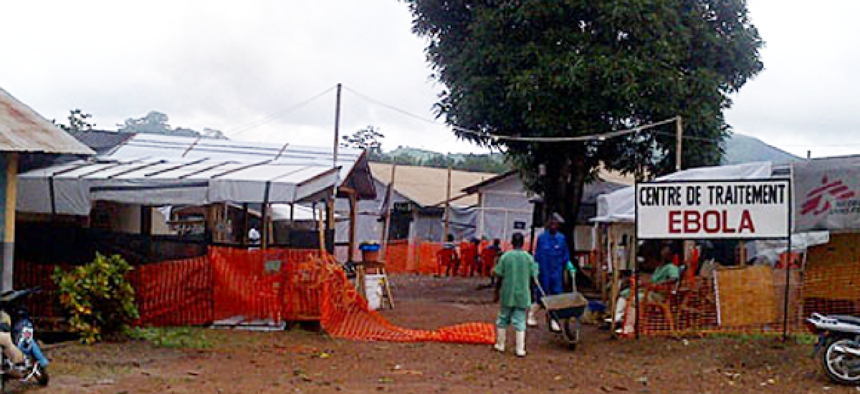Tracking Ebola with CDC's app


Connecting state and local government leaders
Developed by the Centers for Disease Control, the Epi Info viral hemorrhagic fever application is getting its first chance to speed contact tracing of everyone exposed to a person with Ebola and to help with the collection and management of data.
To help stem the ongoing outbreak of Ebola in West Africa, officials at the Centers for Disease Control and Prevention are turning to the latest tools and technology. The Epi Info viral hemorrhagic fever (VHF) application is getting its first chance to speed contact tracing, the pinpointing, of everyone exposed to a person with a contagious disease and help with the collection and management of data on every case.
The VHF application enables users to set up databases of patient information, including names, gender, ages, locations, status -- such as dead or alive – and Epi Case Classification, for suspected case, confirmed case or not a case. Marking people as “sick and isolated” automatically converts them into cases, according to CodePlex, a project for hosting open-source software, and that reduces data entry errors and lessens data management for public health responders.
Through the app, users can quickly see virus transmission diagrams that help field workers visualize an outbreak’s reach, according to a CDC statement. What’s more, it works in places with limited connectivity and information technology support, because once it’s downloaded and installed, it requires no Internet connection.
The VHF application, in development since 2012, may be relatively new, but it’s part of CDC’s Epi Info software platform, available for free since the 1990s. The new tool is intended to target only certain fevers such as Ebola, Marburg, Rift Valley, Lassa and Crimean-Congo, while Epi Info can be used for other diseases, too. Epi Info has more than 100 million users in 191 countries and has been translated into 13 languages.
Once finalized as a standard feature and added to Epi Info, the VHF tool will be available for free also.
Right now Epi Info works only with Microsoft Windows operating systems and uses Microsoft Access to store questionnaires and data, but an open-source rewrite project currently underway will offer a MySQL database driver to support other operating systems.
Epi Info has several modules. The Form Designer lets users create customized questionnaires and data entry forms. The Enter module automatically creates a database from the questionnaire responses, while the Analysis module creates tables, graphs and maps based on the data entered or data imported from 24 formats.
A fourth module, Epi Map, generates geographic maps from the data and is built around Esri MapObjects software. It displays shapefiles containing the geographic boundaries layered with data results from the Analysis module, according to CDC.
The VHF tool comes out of a partnership between CDC’s Center for Surveillance, Epidemiology and Laboratory Services Epi Info team and the Viral Special Pathogens Branch in the National Center for Emerging and Zoonotic Infectious Diseases. The tool is timely not only for use during the current Ebola outbreak, but it also aligns with the government’s first steps toward the Global Health Security Agenda, which aims to improve national security by helping other countries with disease outbreaks.
Commercial companies are also developing tools to help control diseases including Ebola, which is transmitted via direct contact with infected bodily fluids. For instance, South Florida-based PositiveID, a developer of biological detection and diagnostics solutions, has created Firefly Dx, a device that can test body fluid and provide results in less than 20 minutes. It consists of a handheld device with wireless Bluetooth communication and disposable single-use cartridges that take the samples.
On Aug. 4, Luminex, a biotechnology company in Austin, Texas, announced that the Army Medical Research Institute of Infectious Diseases Diagnostics Division is using its MAGPIX technology for rapid diagnostics of Ebola in Africa. MAGPIX uses charge-coupled device imaging to perform qualitative and quantitative analysis of proteins and nucleic acids.
All these tools could play a crucial role in abating the advance of the Ebola outbreak that began in March and has claimed more than 700 lives.
“The bottom line with Ebola is we know how to stop it: traditional public health,” said CDC Director Tom Frieden in a press release. “Find patients, isolate and care for them; find their contacts; educate people; and strictly follow infection control in hospitals. Do those things with meticulous care and Ebola goes away.”

NEXT STORY: LOC recommends formats for preservation of software, data sets




